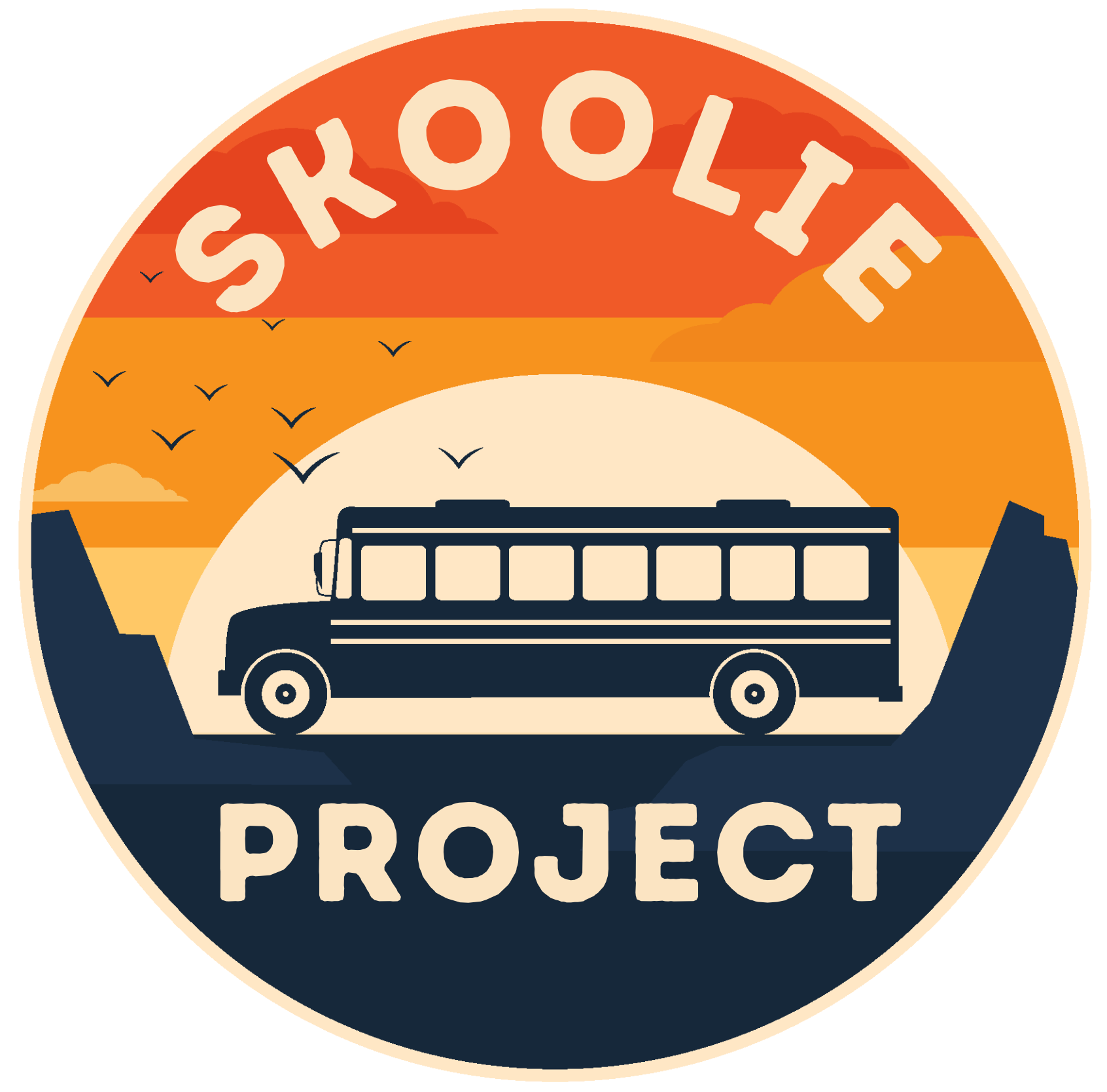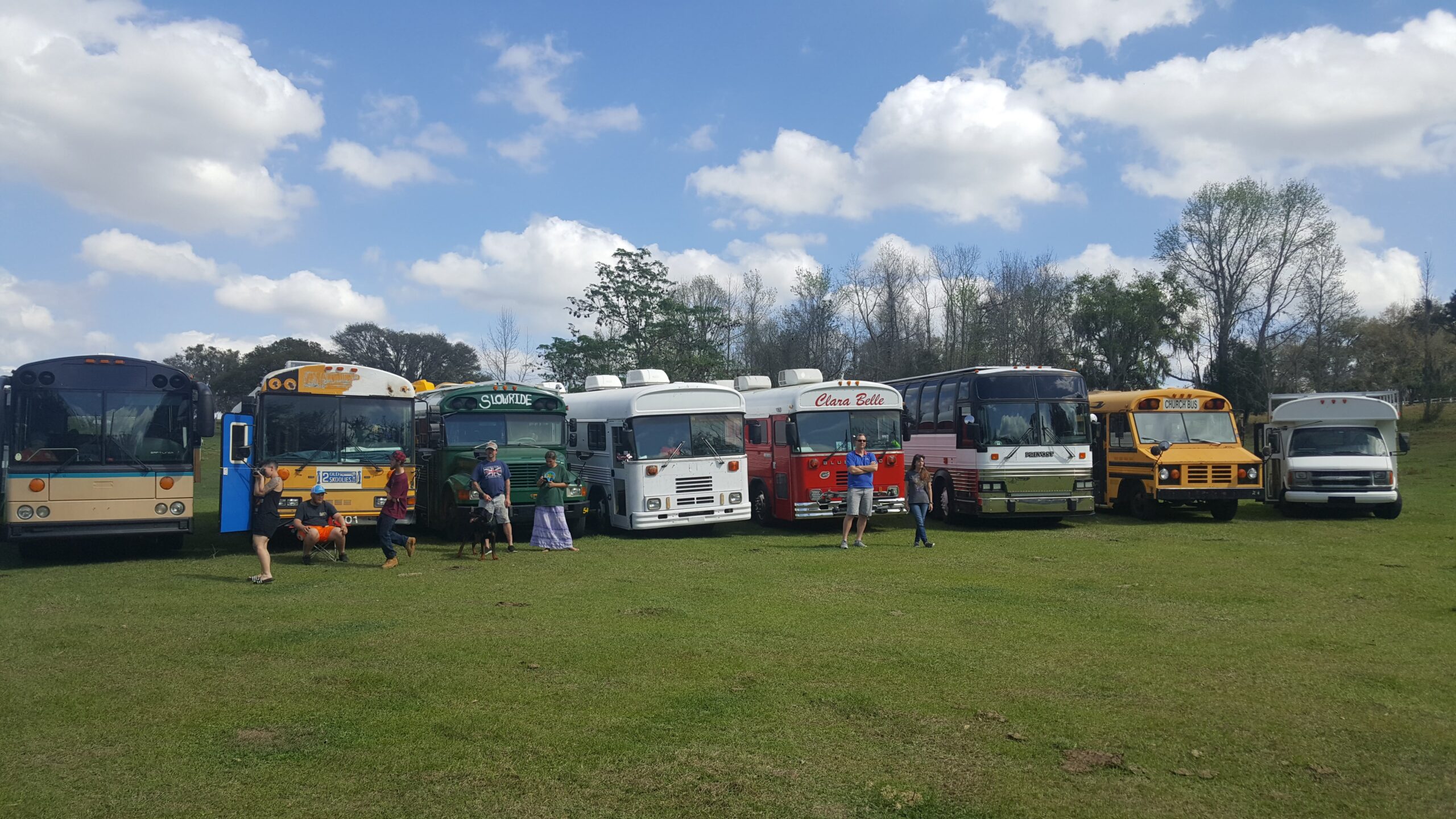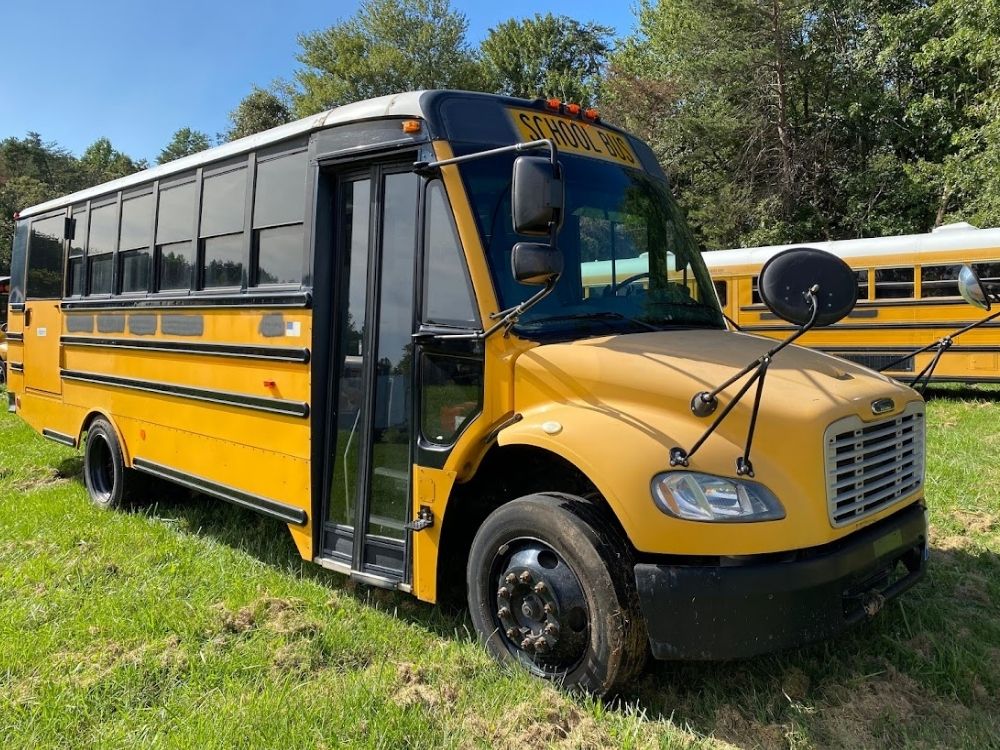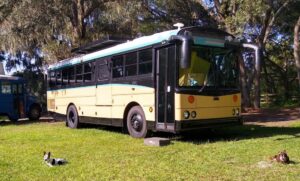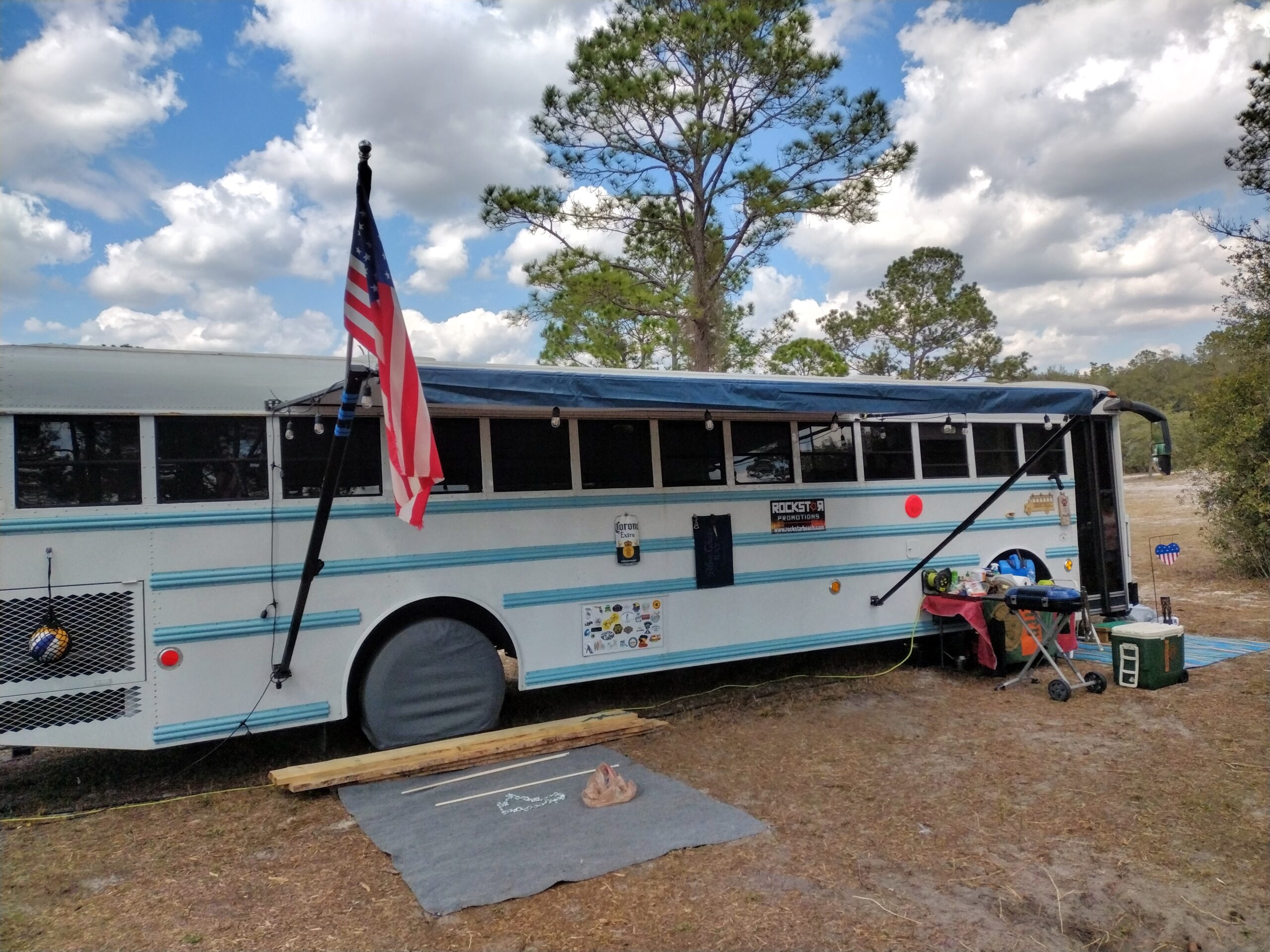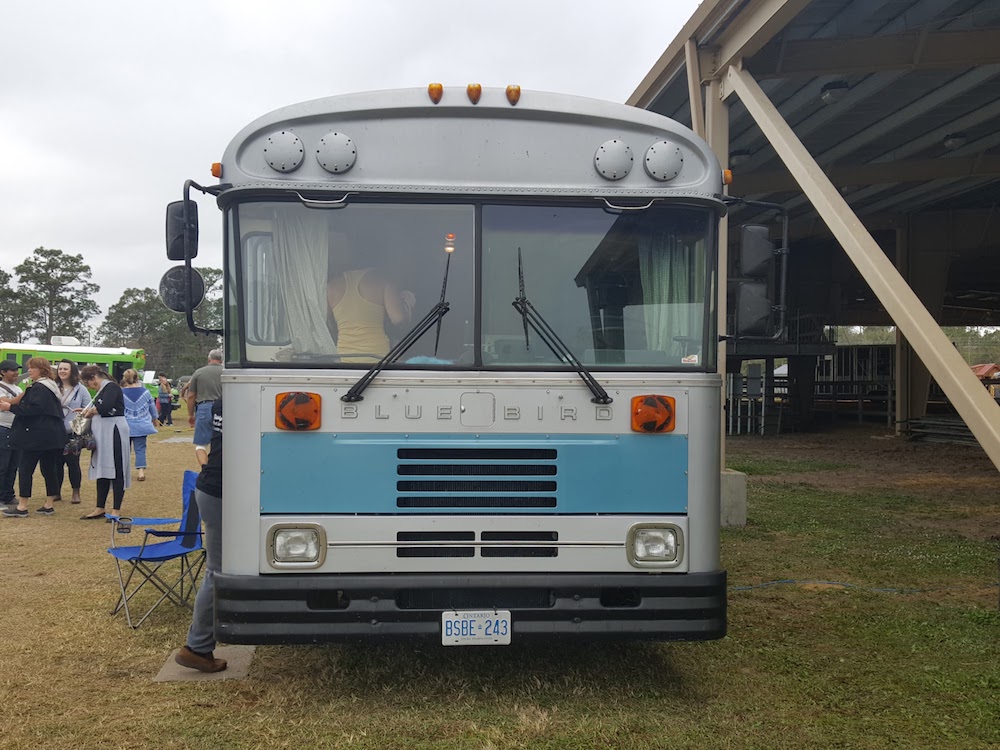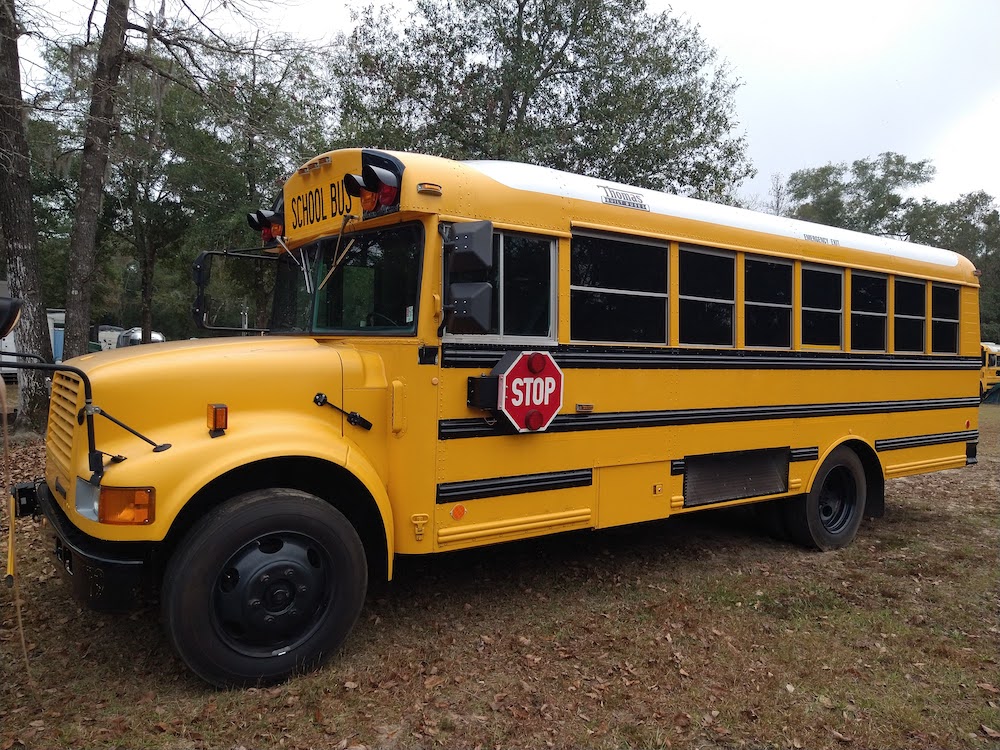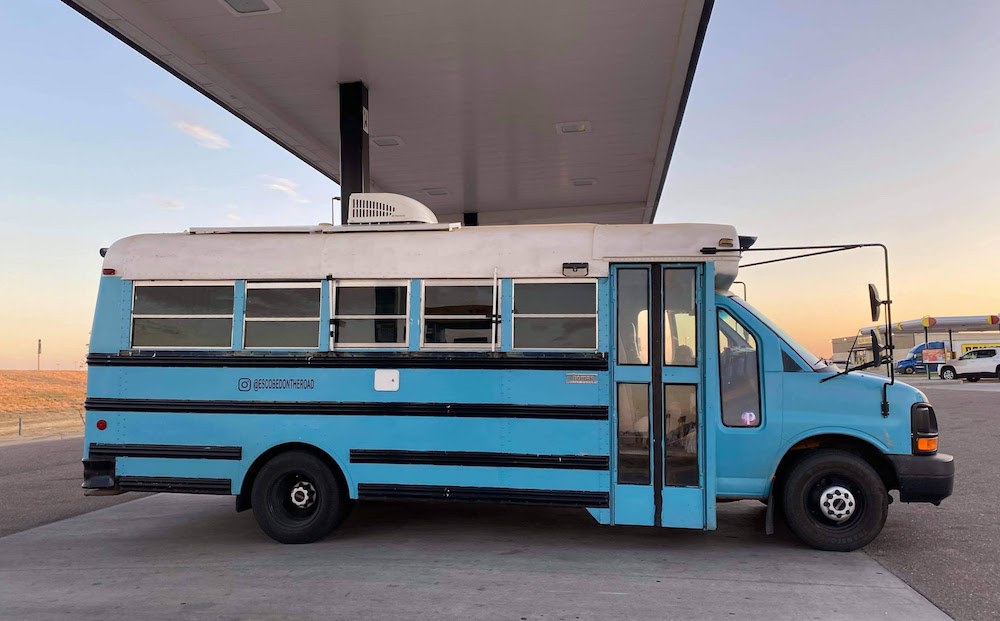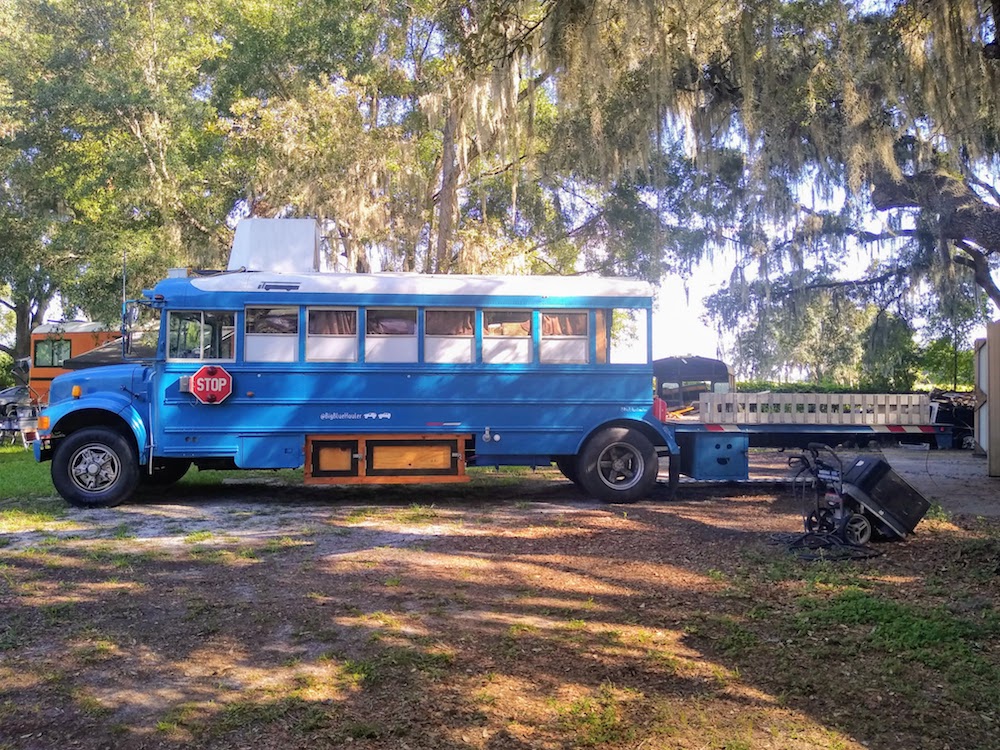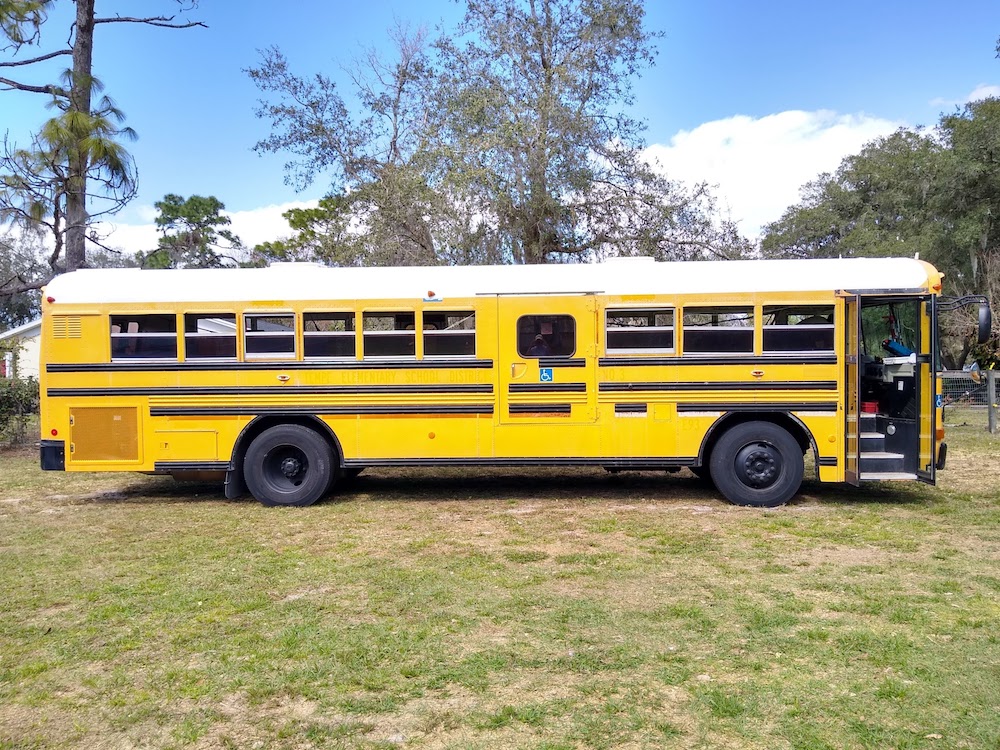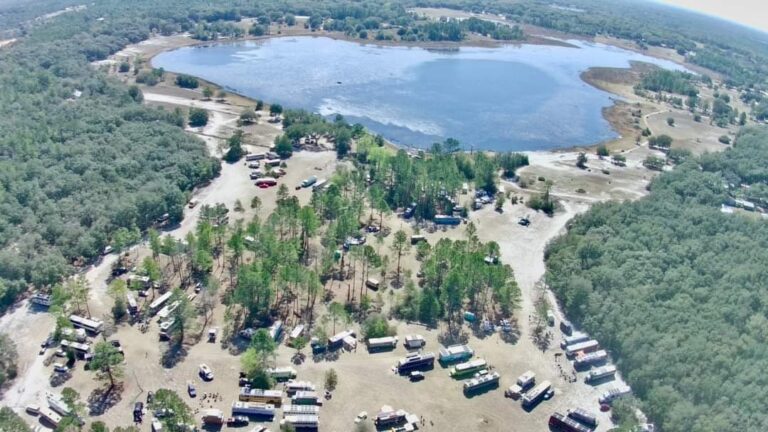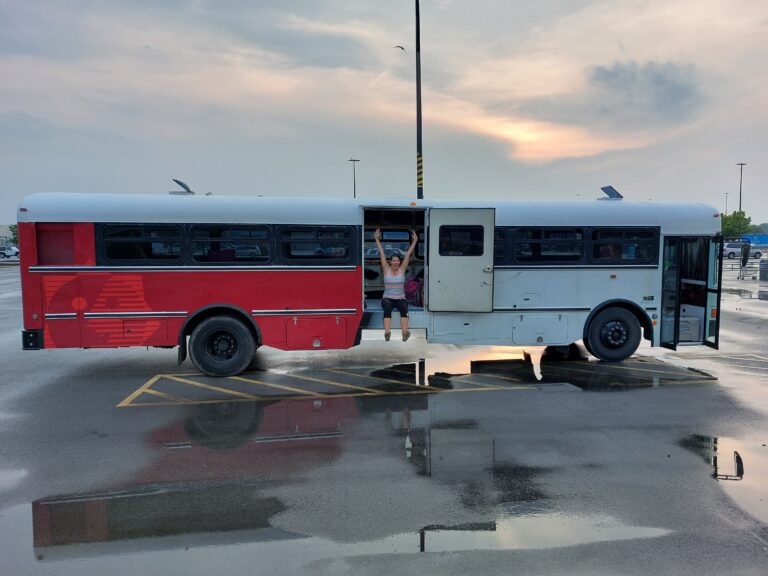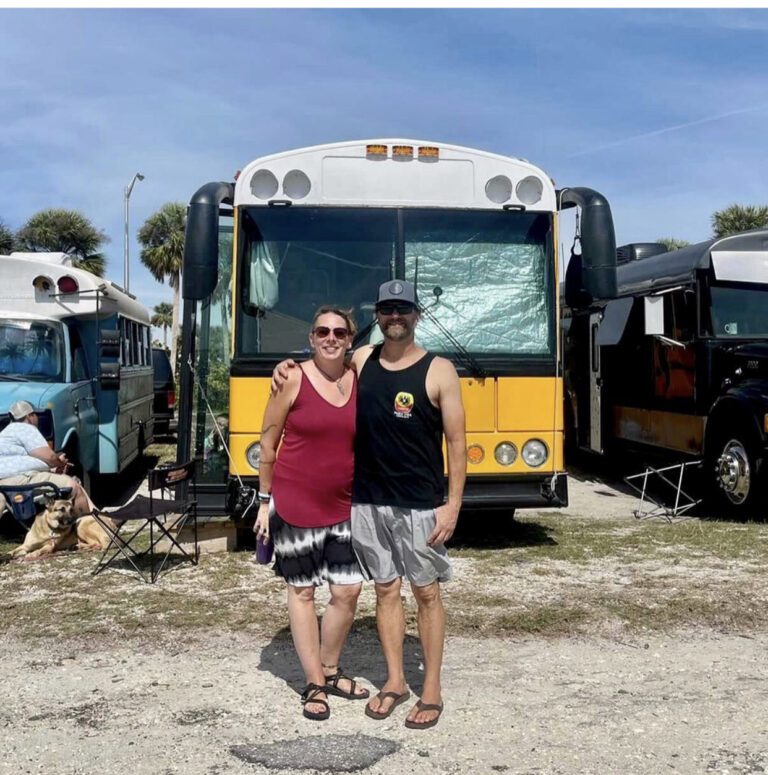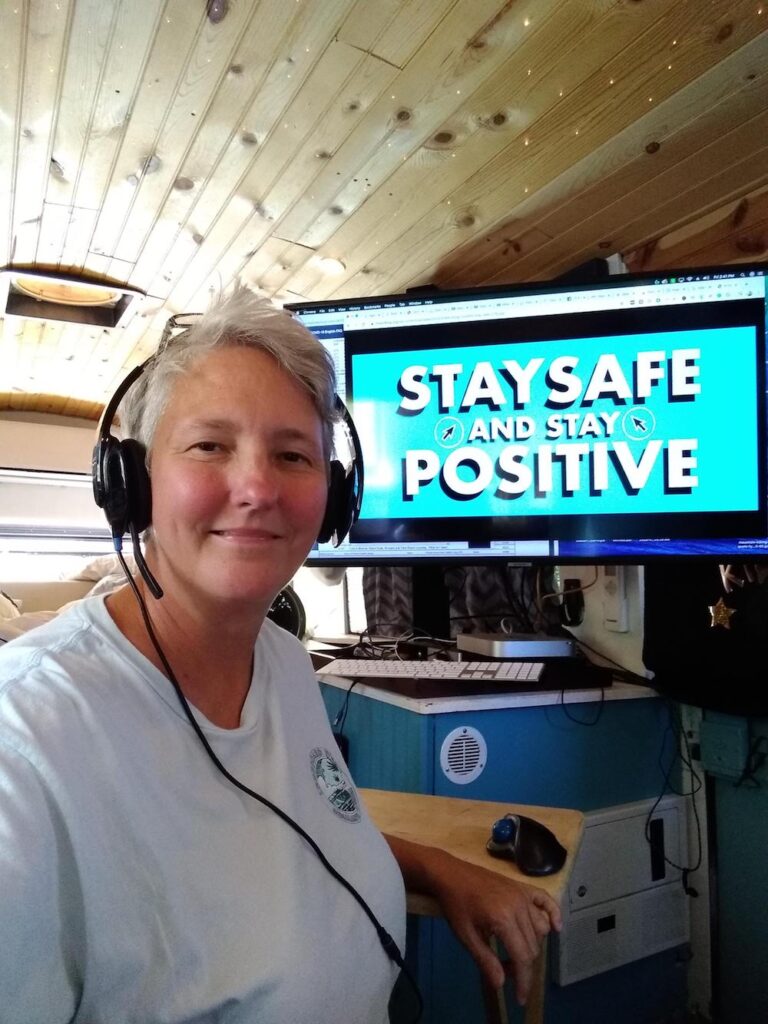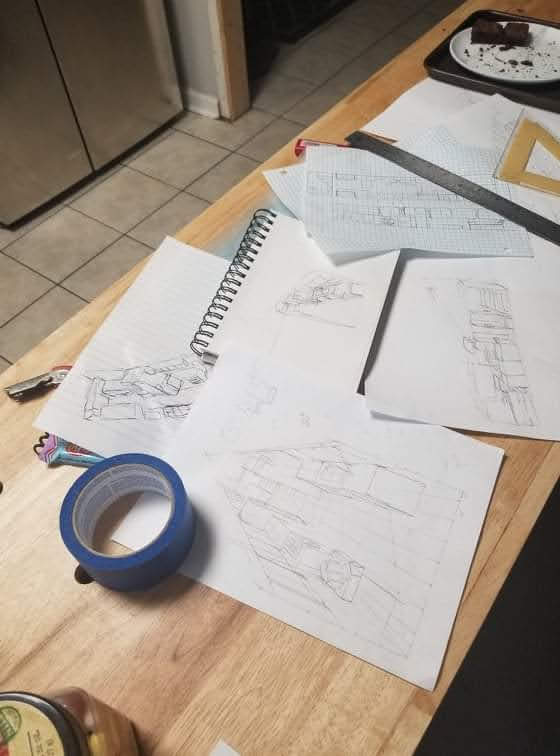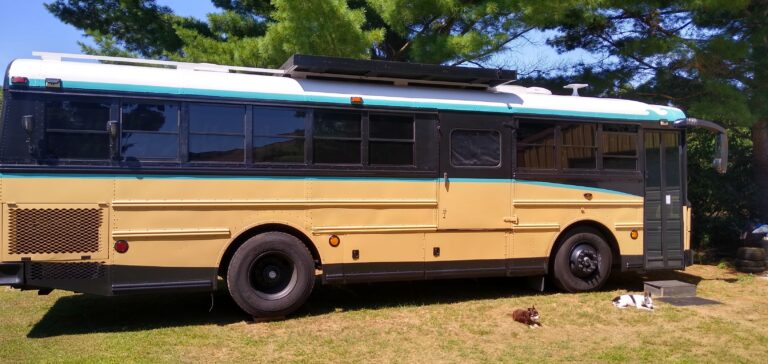Choosing A Skoolie – The Ultimate Guide
Choosing a skoolie can be a bit more complicated than you think it may be. What type of engine? Flatnose, dognose, or snubnose? Do you go with a pusher or a front engine? What length do you need and want? You can choose from a 45-footer, mid-size, shorty, or even a micro.
There are several decisions you need to consider when choosing a skoolie.
How to Choose The Right Skoolie for You!
We are going to look at the key factors when choosing a skoolie in this post. Each individual will have their own reasons for choosing a skoolie.
So You Are Thinking of Buying A Skoolie?
So, you are either thinking about buying a school bus and converting it to a motorhome, aka Skoolie. Choosing a skoolie is the first step in your adventure!
If you have already purchased your bus, then you are one step ahead of those who are still trying to decide on what kind of bus is best for their needs, wants, desires, and lifestyle.
First of all, congratulations on deciding on a school bus as your next tiny house on wheels. There are many advantages to owning, living, and traveling on a school bus conversion.
These buses were made with one thing in mind, the safe delivery of children to and from school and events. The construction of a school bus is bar-none one of the best and safest built transportation vehicles made today.
The structural integrity of the build itself was enough to convince us in choosing a skoolie over an RV.
The security and safety skoolie offers are bar none the best. The structural toughness, reliability, and integrity of a bus speak for themselves.
These vehicles have been regularly maintained through various school boards across the country. Some may not have records of their service and repairs, rest assured, that they have been well taken care of.
So, again, welcome, and congratulations on your decision to join this quickly growing community of skoolie owners and travelers.
What is Your Motivation For Choosing A Skoolie?
What is it about living in or at the very least traveling part-time in a converted school bus? Is it an adventure? Is it the appeal of nomadic living?
Maybe, it's breaking from the norm of a manufactured RV? Did you see some YouTube videos of someone else doing it and it just resonated with you?
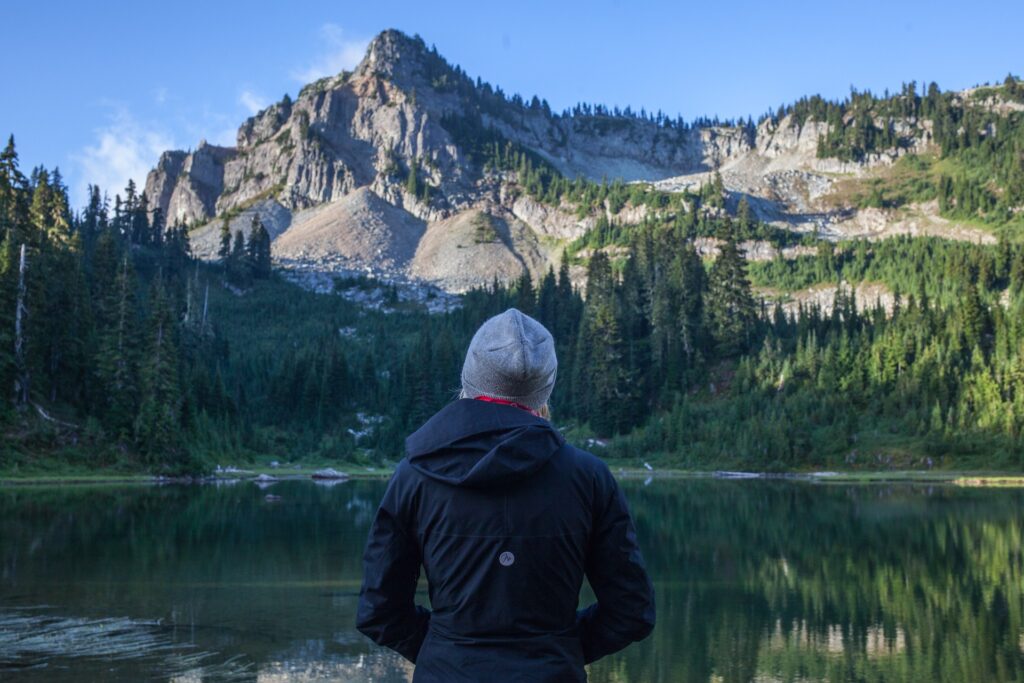
Whatever your motivation is, tap into that and focus on it to help you along the way. If you are like many others who have started this journey, there are going to be times when you are going to question yourself if it is worth it or “what in the heck am I doing?”
Besides choosing a skoolie that is the right bus for you, that is really just the tip of the iceberg. There are so many decisions to be made before you have removed your first bench seat or until you have moved in and are cruising down the road to your maiden voyage destination.
Rest assured, there are multiple ways of building your custom tiny house on wheels. There are many more right ways and options for building your skoolie than there are “wrong” ways. In fact, we would dare to say there are no “wrong” ways for building out your skoolie. Only what is appealing and fits your specific needs.
There may be better or more efficient ways than others, but the beautiful thing about a DIY skoolie build is that you build it based on your needs, wants, and personality.
There may be some times when you ask yourself, “Is this really worth it?” All I can say, from our experience, is that YES, it is worth it! So, keep moving forward. Stay focused on the dream!
Keep reminding yourself of why you started this journey in the first place! Whether it is freedom, adventure, or just something you’ve had on your bucket list to do. Get out there and discover!
Choosing A Skoolie That Is Right For You
There are so many different variables when choosing a skoolie that is the right skoolie for you and your life of traveling and living tiny. We are going to take a deeper dive into the different types of skoolies as well as some of the more important variables in choosing a skoolie for your adventures.
Choosing a skoolie is the easy part. Choosing the type of skoolie is your next step to a life of adventure and freedom! There are four basic school buses to choose from. The “shorty” school bus, the dog-nose school bus, the rear engine or diesel pusher, and the flat nose front engine.
Here is a brief description of the four different types of skoolies we are going to discuss today. A little further along in this post, we will dig a little deeper into each one.
The Shorty Skoolie
Choosing a shorty skoolie will allow you better gas or fuel mileage. Not all shorty skoolies are diesel engines, Many are in fact gasoline engines on a van chassis. A shorty skoolie will be a more stealthy approach to parking and camping, and a much easier time driving and maneuvering about.
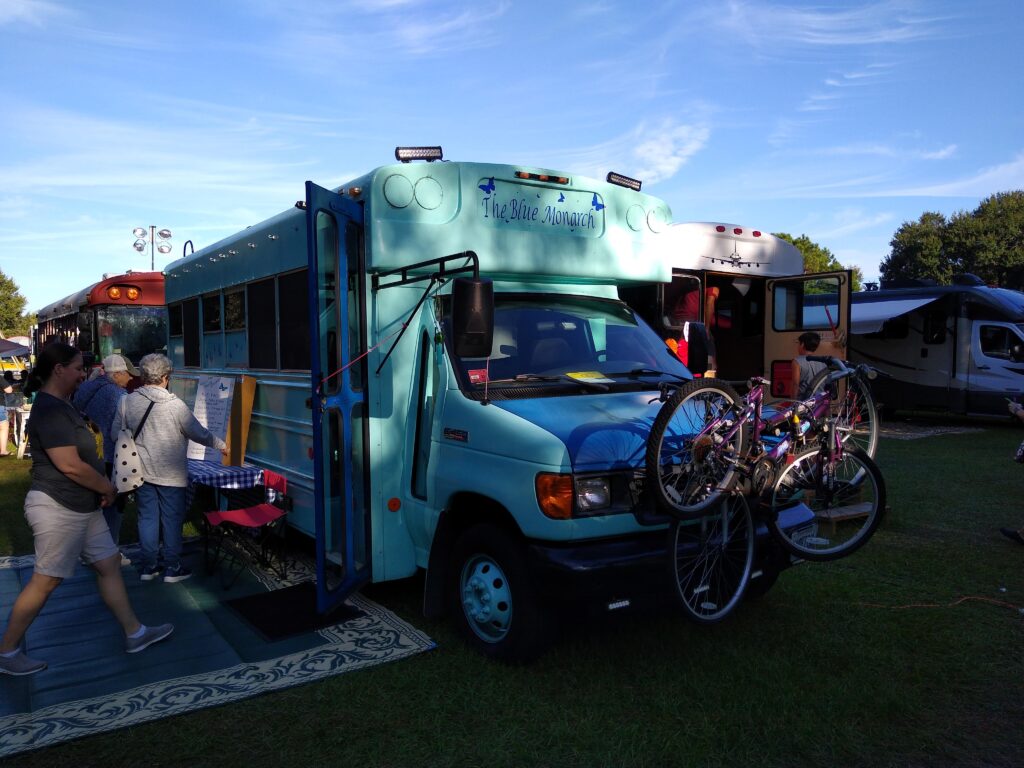
The Dog Nose Skoolie
The dog nose skoolie is probably the most popular skoolie out on the roads today. This is in part to the style but likely more due to the fact that it is the most easily available type of school bus made and used in our school districts across the U.S.
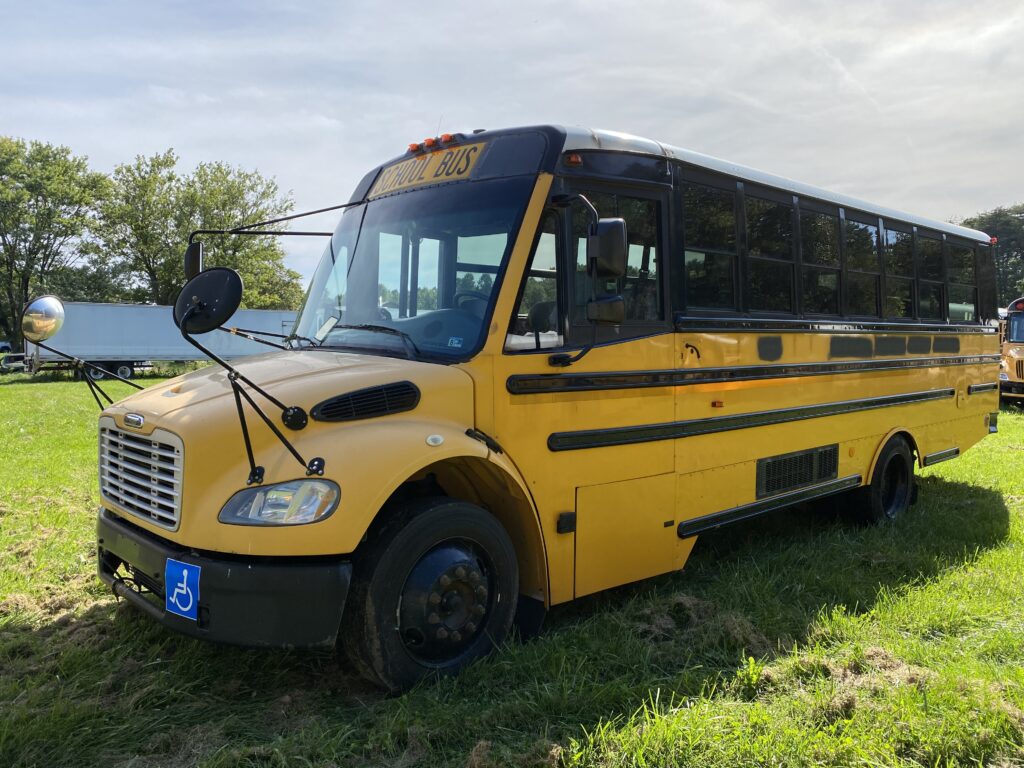
The dog nose is considered to be easier to drive than a front-end skoolie. That is because the driver sits behind the front wheels as they would in a passenger vehicle or a box truck like a U-Haul whereas, in a flat-nosed skoolie, the driver is sitting ahead of the front wheels.
The Diesel Pusher Skoolie
The diesel pusher skoolie is just what the name implies. The engine is in the rear of the school bus and thus, the power train pushes the vehicle down the road instead of “pulling” with an engine in front of the vehicle.
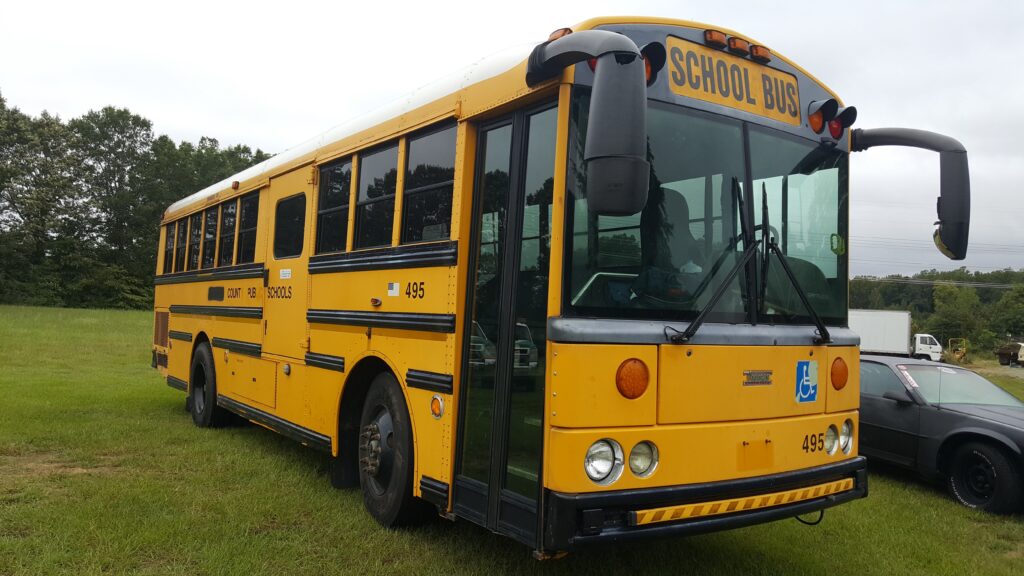
Some people prefer the diesel pusher because it has more of a coach or MCI type of look. This is attractive to those who want a skoolie but prefer the look and feel of an MCI type of bus over the traditional school bus look.
The Flat-nose Front Engine Skoolie
The front-engine flat nose skoolie is very popular with those who wish to have the flat nose or MCI look, but still prefer to have a garage or exit door in the rear of the bus. With the engine up front, this still allows for a “garage” to be utilized in the rear of the bus.
We will get into more detail on each of the different styles of skoolies below.
How Big is “Big Enough” When Choosing A Skoolie?
One of the first and more obvious decisions you will need to make when choosing a skoolie is, “How Big” of a skoolie should I choose? For most of us living in a tiny house on wheels, we have never driven anything much larger than a pickup truck.
So, getting around in your skoolie, (a.k.a. Driving it) is something you may want to consider when choosing the skoolie for you. Our experience with driving our 32’ flat-nose diesel pusher was a very quick study and an easy skill to master!
There are other things to consider when choosing a specific type of bus. We will touch on some of the basic information and differences in the styles of buses and how that can impact your lifestyle.
Choosing The Best Length For Your Skoolie
If you have never heard the expression, “Size Matters”, then now is the time to become familiar with it! You can get a bus from as long as 40+ feet down to less than 20 feet. It all comes down to “how big” is “big enough” for you or you and your family?
A 40-foot bus will allow you to have lots of stuff and plenty of room as compared to a “shorty”. Mind you, when we say “lots and lots of room” we are talking about 265 square feet. So, large is a relative term when talking about square footage in a skoolie.
You have to take into consideration the entry steps, driver’s cockpit area, and engine cover which will eliminate square footage.
The shorter the bus is, the more compact your living becomes. Your floor plan and layout will have to be adjusted accordingly.
One thing to keep in mind when considering the length of your skoolie. Where you are going to be parking it and where you would like to take it while adventuring.
Some State and Federal National parks have a size limitation on buses, RVs, and similar vehicles. You should know that the average length for an RV in a national park is only 27 feet.
Some parks allow a motorhome up to 40 + feet, while some have a restriction of a mere 20 feet. For National Parks that do allow up to 40 feet and more RVs, the spots for those long busses are limited, so it is wise to plan and make reservations early in your traveling plans and itinerary. (Yellowstone only has a dozen or so 40’ spots available at any given time of the year.)
National Park Size Limitations
Here are some ballpark numbers for national park campgrounds and what they will accommodate.
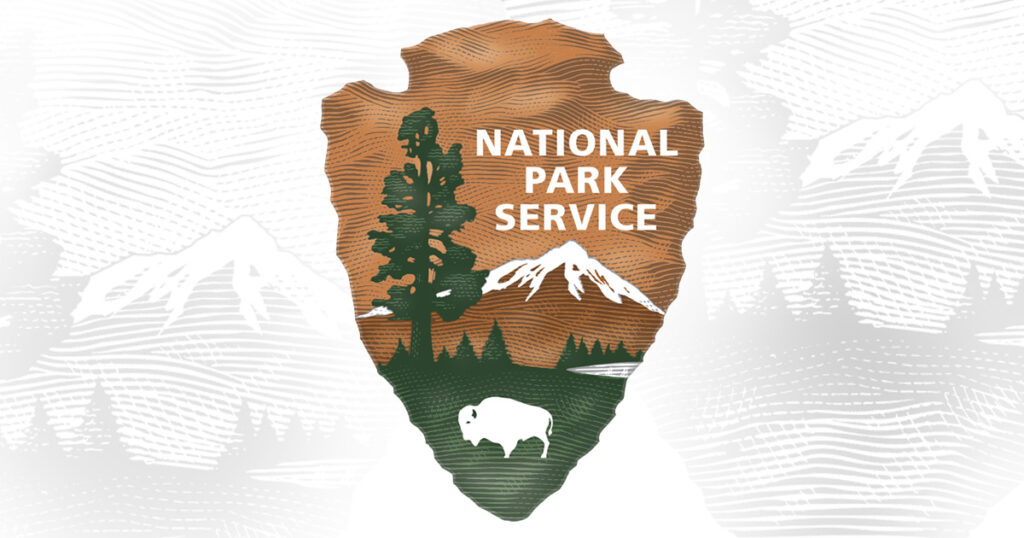
1. Every national campground allows RVs that are up to 12 feet. (Keep in mind, however, there are a few national campgrounds that do not allow Rv’s at all, and you must hike or cycle to get in and explore and84% then only camp with a tent.)
2. 98% of all national campgrounds allow RVs up to 19 feet or less.
3. 93% of all national campgrounds allow RVs that are 25 feet or less.
4. 84% of all national campgrounds allow RVs that are 29 feet or less.
5. 81% of all national campgrounds allow RVs that are 32 feet or less.
6. 73% of all national campgrounds allow RVs that are 35 feet or less
7. 60% of all national campgrounds allow RVs that are 37 feet or less
8. 53% of all national campgrounds allow RVs that are 40 feet or less
9. 7% of all national campgrounds allow RVs that are 41 to 45 feet or less
As we mentioned earlier, many of the campsites in our national parks will only have a few campsites for the larger sizes. Be sure to plan well ahead in advance of your trip to ensure you are able to reserve a spot to accommodate your long skoolie!
Okay, enough on size, if you have any other questions on the size of a skoolie for you, you are always welcome to reach out to us by leaving a comment below!
Choosing the Right Style of Skoolie For You
Now, let’s talk a little bit about the style of bus you want to make into your Tiny House on wheels. One of the things we like most about owning and building a DIY skoolie is that we can mold and build our bus to fit our style and personality.
When you go to a Tiny House Festival, Swarm, or any kind of event where skoolie owners are gathering, you will not find two skoolies that are the same! We love that! Original, customized, and unique builds are what a DIY skoolie is all about!
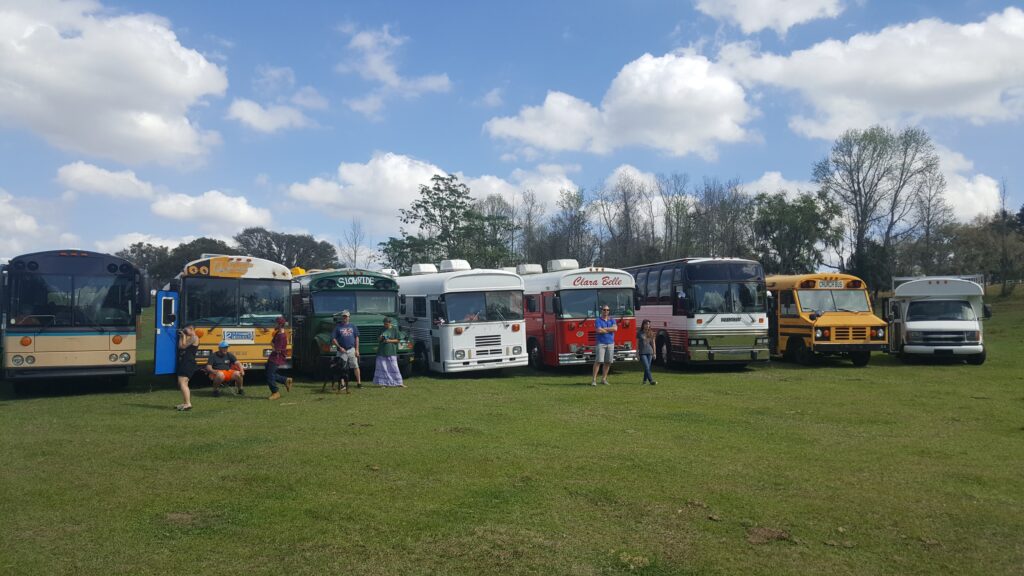
Should you go with a traditional “dog-nose” or a more coach or motorhome “look” with a “flat-nose”? Maybe it’s the shorty that appeals to you the most?
All of them are excellent choices and really, it just boils down to what your preference in style, application, and look is.
Let’s dig a little deeper into each of the different styles of skoolie.
Choosing a Skoolie – Dog Nose
A dog-nose skoolie is the a-typical school bus look and feel. It is the most recognizable school bus style. It drives like a “regular” vehicle which is probably one of the easiest engines to work on due to the location and “openness” of the engine compartment.
One thing to consider when choosing a dog-nose skoolie is the overall length and total living area are going to be much less since the engine compartment to the steps is about 10 feet in length. (front bumper to back of driver’s cockpit) So, a 35’ dognose skoolie is only going to give you 25’ of living space (at best).
Choosing a Skoolie – Diesel Pusher
When we were choosing a skoolie for our adventures, the flat nose was at the top of our list! A flat nose skoolie diesel pusher has more of a coach, RV, or transit bus look. It has a large flat windshield, an open driver’s cockpit area and the engine is literally at the rear end of the bus.
The rear engine busses often referred to as diesel pushers offer a more quiet ride for the driver and anyone else sitting up front. There is no “dog house” to contend with either, which is the engine cover between the driver’s seat and the entry stairs.
Another advantage of the rear engine is that you do not have a drive-train running the length of the bus from the engine/transmission at the front of the bus all the way to the back of the rear axle. With that, you also do not have a 20-something-foot-long muffler extending to the back of the bus either.
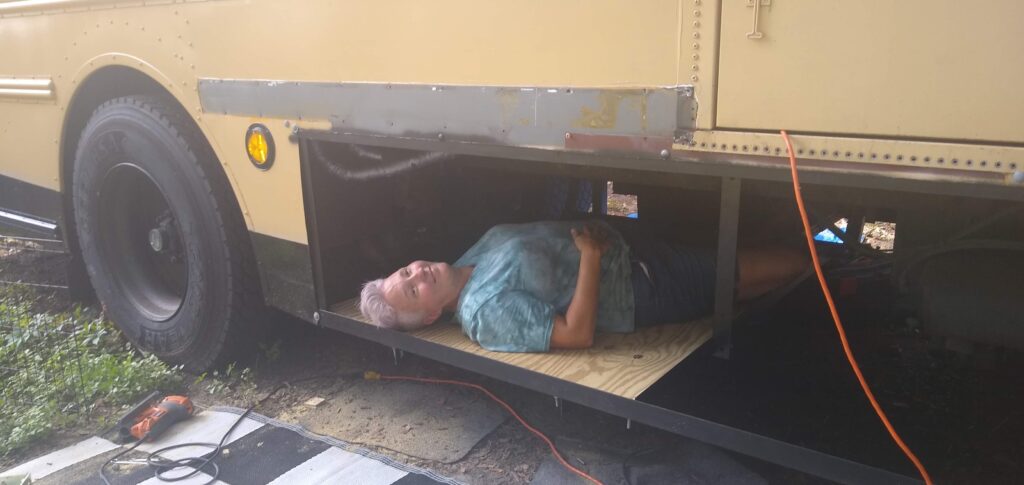
What this means for someone who owns a diesel pusher is that there are much fewer potential mechanical problems. There is a ton of under-belly storage space to keep things stored.
The total square feet you would lose on a flat nose is only about 5 feet from the windshield to the back of the driver’s seat. Therefore, a 35-foot bus would still net you about 30 feet of living area.
Choosing A Skoolie – Front Engine Flat Nose
The flat-nosed front-engine skoolie is another popular skoolie when choosing a skoolie. One of the advantages of the front engine is you still have the rear door.
Some people really like having this option when choosing a skoolie. It allows for a place to put bikes, chairs, tools, and other items that would traditionally go into a garage.
This area of a skoolie is often referred to as a garage.
One of the disadvantages of the front-end engine flat-nose skoolie when choosing a skoolie is that the engine is right underneath the driver’s cockpit area. The engine can generate a lot of heat and unless you have the dog house insulated very well, it can sometimes get a little warm.
Also, with the engine being right underneath you, the noise can sometimes be a bit louder.
Since the engine is in front, the drive train and exhaust, have to run the entire length under the bus. This takes up valuable and potential storage space as well as more mechanical and moving parts to contend with.
When choosing a skoolie, consider the front engine flat nose to have that extra space in the front and rear of your bus.
Choosing A Skoolie – The Shorty
Not all skoolies need to be a 40-foot, 13-window bus when choosing a skoolie. The Shorty skoolie is becoming a very popular style for people when choosing a skoolie to live and travel in.
The shorty is easy to drive, more maneuverable, and more stealthy than a larger more traditional-sized bus. You can find shorties with either a gasoline engine or a diesel engine. The diesel engine models will get slightly better mileage, but both are worthy engines.
The shorty may be shorter than a traditional school bus, but most of them are just as wide. That means you get that open floor plan even though it may be much shorter. It is no big deal to fit a king-size bed in a shorty skoolie.
A shorty is likely going to be less expensive on maintenance as well as repairs. Most shorties have a 2500 or 3500-sized engine so parts, labor repair, and maintenance will be much less.
Most of the tires are “normal” sized tires, so that is a great reduction in maintenance as well.
When it comes to being stealthy, the shorty should have the advantage over the larger busses as well. Of course, it all depends on your paint scheme and how you have outfitted the exterior of your skoolie.
Don't overlook the short school bus when choosing a skoolie.
Choosing A Skoolie – Condition
When it is time to physically go put your eyes and hands on that potential tiny house on wheels, you want to be prepared and equipped to make a smart, informed, and responsible decision before handing over some cash for the title.
Before choosing a skoolie, we would like to discuss some things with you. Things will make the purchase of your new skoolie a much better experience.
Let’s talk about the reliability, safety, and condition of the bus. How reliable is the bus you are considering purchasing? How dependable is that bus?
Will it get you home? How about in 6 months? Is it still going to be a reliable engine?
Mind you, once you get it home, maintenance and upkeep responsibilities are all on your shoulders at that point. We can discuss those things at a later time. For now, though, let’s get you and your bus safely and quickly home.
If you are like us, you probably do not know much about diesel engines and large vehicles.
Hire A Mechanic
When choosing a skoolie, it is imperative that you have someone who is knowledgeable about diesel engines if you are not. If you do not know someone who can look over the engine, hire a diesel mechanic to look it over. Some things to consider. Look and check all of the fluid levels and conditions.
Check the air and fuel filters if possible. Pay very close attention to the tires. Negotiate a better price if the tires need to be replaced.
Look for visible signs of advanced rust on the underside of the wheel wells. Also, look underneath the entry steps and the underbelly in particular.
We will not go into the different types of transmission and engine combinations here but will address that in a later post, or you can get deeper into this Skoolie series of E-books.
Wrap-Up To Choosing A Skoolie
Choosing a Skoolie is as much a personal choice as it is an informed decision. The type of bus you decide to purchase is a personal choice. It will best fit you and your needs as you begin your life living tiny on the road.
Depending on the size and style of the bus when choosing a skoolie, will greatly affect the floorplan you ultimately build out. Want a fresh perspective on skoolie floorplans, check out this guide on NatnDon in the wild.
We hope this post has helped inform and guide you when choosing a skoolie for your new tiny house on wheels and adventures.
We would love to hear your thoughts and see what your skoolie looks like! Leave us a comment at the end of this blog post, we look forward to connecting with you!
Don and Nat
